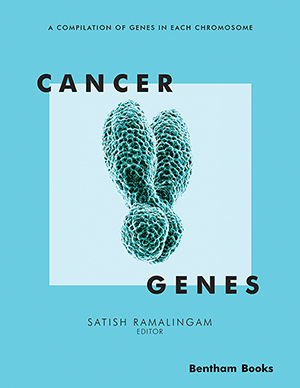Abstract
MUC15, a member of the mucin family, is a heavily glycosylated transmembrane protein with the primary functions of lubricating surfaces, establishing a selective molecular barrier at the epithelium and mediating signal transduction. Aberrant expression of MUC15 plays a crucial role in the progression of multiple diseases, including malignant tumors. MUC15 has been identified as a tumor suppressor, but current evidence indicate its function as an oncogene in different types of cancers. MUC15 has been shown to be involved in the development of cancer and influence cellular growth, adhesion, invasion, metastasis and immune immunomodulation. However, the precise role of MUC15 in tumour development has not been thoroughly clarified. Here, we systematically summarize the structure and function of MUC15 in cancer, and discuss its potential role in cancer treatment.
Keywords: MUC15, cancer proliferation, metastasis, tumour therapy, glycosylated transmembrane protein, signal transduction.
[http://dx.doi.org/10.1016/j.ijpharm.2017.09.018] [PMID: 28917986]
[http://dx.doi.org/10.1038/nrc2761] [PMID: 19935676]
[http://dx.doi.org/10.1038/mi.2008.5] [PMID: 19079178]
[http://dx.doi.org/10.1016/j.critrevonc.2017.12.006] [PMID: 29458795]
[http://dx.doi.org/10.1038/nrmicro2538] [PMID: 21407243]
[http://dx.doi.org/10.1016/j.bbagen.2014.05.003] [PMID: 24821013]
[http://dx.doi.org/10.1158/0008-5472.CAN-03-2636] [PMID: 14744777]
[http://dx.doi.org/10.1038/nrc1251] [PMID: 14681689]
[http://dx.doi.org/10.3390/ijms20061288] [PMID: 30875782]
[http://dx.doi.org/10.1038/nature01440] [PMID: 12646923]
[http://dx.doi.org/10.1186/s12879-019-4213-y] [PMID: 31307416]
[http://dx.doi.org/10.1007/s11596-014-1267-3] [PMID: 24710941]
[http://dx.doi.org/10.1038/s41389-018-0094-y] [PMID: 30420637]
[http://dx.doi.org/10.1093/carcin/bgp137] [PMID: 19520792]
[http://dx.doi.org/10.1053/j.gastro.2013.08.009] [PMID: 23933603]
[http://dx.doi.org/10.1007/s12253-014-9878-3] [PMID: 25573589]
[http://dx.doi.org/10.1046/j.1432-1033.2002.02949.x] [PMID: 12047385]
[http://dx.doi.org/10.1023/A:1006960004440] [PMID: 9557871]
[http://dx.doi.org/10.1093/glycob/10.5.439] [PMID: 10764832]
[http://dx.doi.org/10.1002/ijc.1554] [PMID: 11745478]
[PMID: 1490100]
[http://dx.doi.org/10.1097/MLG.0b013e31806db531] [PMID: 17667140]
[http://dx.doi.org/10.3168/jds.2008-1204] [PMID: 19038922]
[http://dx.doi.org/10.1016/j.preteyeres.2019.100777] [PMID: 31493487]
[http://dx.doi.org/10.1089/thy.2010.0339] [PMID: 21615302]
[http://dx.doi.org/10.1016/j.cellsig.2015.11.004] [PMID: 26569340]
[http://dx.doi.org/10.1186/s13058-014-0470-2] [PMID: 25380620]
[http://dx.doi.org/10.1186/1755-8794-1-13] [PMID: 18442402]
[http://dx.doi.org/10.1023/A:1025815113599] [PMID: 15000151]
[http://dx.doi.org/10.1093/humrep/dem249] [PMID: 17720698]
[http://dx.doi.org/10.1371/journal.pone.0039306] [PMID: 22761758]
[http://dx.doi.org/10.3390/ijms21020438] [PMID: 31936675]
[http://dx.doi.org/10.1038/sj.onc.1206291] [PMID: 12618757]
[http://dx.doi.org/10.1158/1541-7786.MCR-06-0038] [PMID: 16849524]
[http://dx.doi.org/10.1038/nrc822] [PMID: 12189386]
[http://dx.doi.org/10.1038/nrc2620] [PMID: 19262571]
[http://dx.doi.org/10.1158/0008-5472.CAN-18-0014] [PMID: 30401711]
[http://dx.doi.org/10.1158/0008-5472.CAN-17-3841] [PMID: 29880482]
[http://dx.doi.org/10.1093/intimm/10.12.1907] [PMID: 9885912]
[http://dx.doi.org/10.1038/nm0198-043] [PMID: 9427605]
[PMID: 10232613]
[http://dx.doi.org/10.1155/2015/347292] [PMID: 25977598]
[http://dx.doi.org/10.1038/onc.2010.87] [PMID: 20348949]
[http://dx.doi.org/10.1038/sj.bjc.6605285] [PMID: 19738614]
[http://dx.doi.org/10.1159/000453594] [PMID: 28052300]
[http://dx.doi.org/10.1016/j.bbcan.2017.03.003] [PMID: 28302417]
[http://dx.doi.org/10.1158/1940-6207.CAPR-12-0275] [PMID: 23248097]
[http://dx.doi.org/10.1016/j.gene.2005.12.021] [PMID: 16500040]
[http://dx.doi.org/10.1016/j.ymthe.2017.10.020] [PMID: 29258739]
[http://dx.doi.org/10.1016/j.molmed.2014.02.007] [PMID: 24667139]
[http://dx.doi.org/10.1371/journal.pone.0023344] [PMID: 21886786]
[http://dx.doi.org/10.1080/14728222.2017.1323880] [PMID: 28460571]
[http://dx.doi.org/10.1021/acschembio.7b00305] [PMID: 28617578]
[http://dx.doi.org/10.1186/1476-4598-13-129] [PMID: 24886523]
[http://dx.doi.org/10.1002/ijc.31164] [PMID: 29159934]































